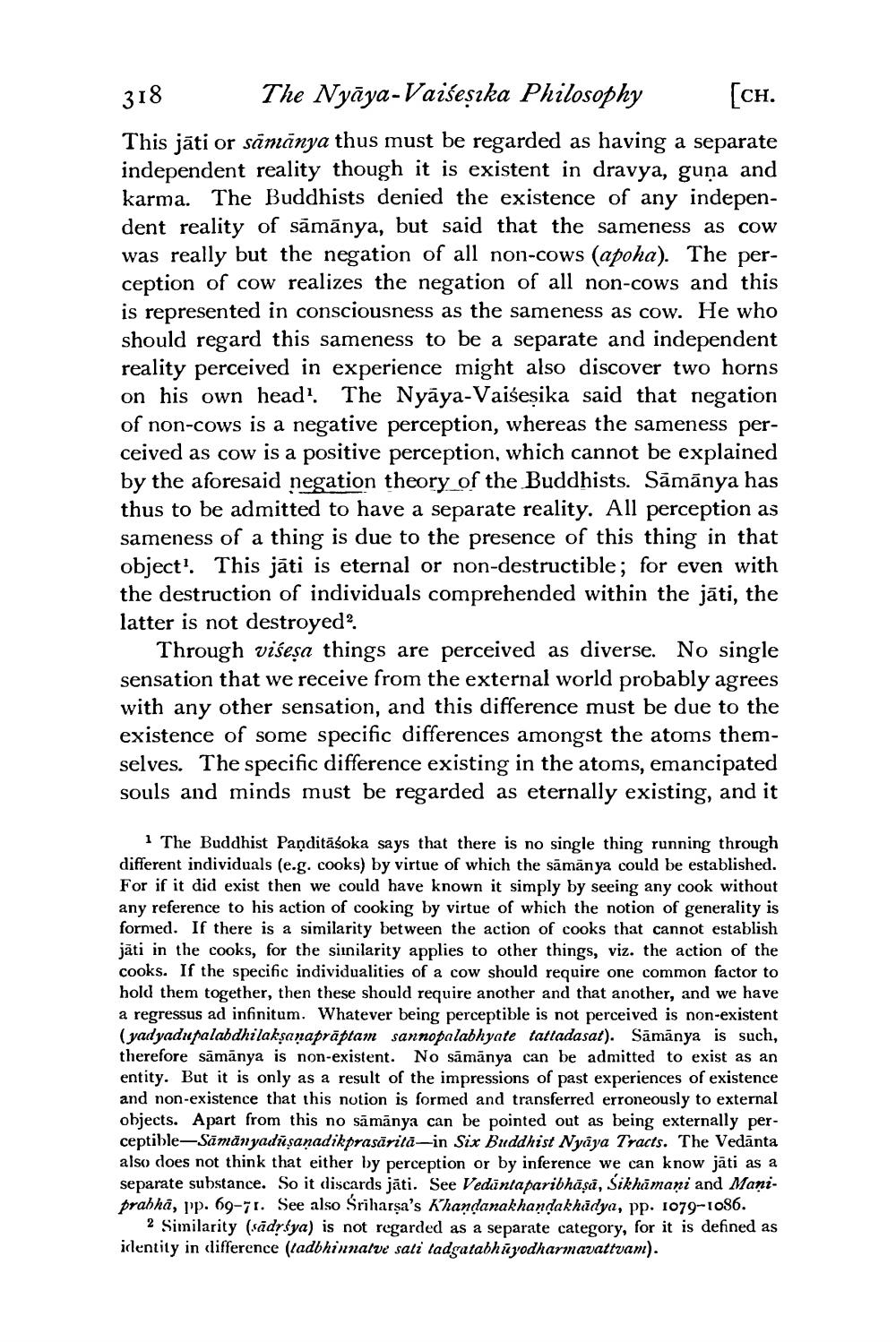________________
318
The Nyaya-Vaiseṣika Philosophy
[CH.
This jāti or sāmānya thus must be regarded as having a separate independent reality though it is existent in dravya, guṇa and karma. The Buddhists denied the existence of any independent reality of samanya, but said that the sameness as cow was really but the negation of all non-cows (apoha). The perception of cow realizes the negation of all non-cows and this is represented in consciousness as the sameness as cow. He who should regard this sameness to be a separate and independent reality perceived in experience might also discover two horns on his own head'. The Nyaya-Vaiseṣika said that negation of non-cows is a negative perception, whereas the sameness perceived as cow is a positive perception, which cannot be explained by the aforesaid negation theory of the Buddhists. Sāmānya has thus to be admitted to have a separate reality. All perception as sameness of a thing is due to the presence of this thing in that object'. This jāti is eternal or non-destructible; for even with the destruction of individuals comprehended within the jāti, the latter is not destroyed?.
Through viseṣa things are perceived as diverse. No single sensation that we receive from the external world probably agrees with any other sensation, and this difference must be due to the existence of some specific differences amongst the atoms themselves. The specific difference existing in the atoms, emancipated souls and minds must be regarded as eternally existing, and it
1 The Buddhist Panditaśoka says that there is no single thing running through different individuals (e.g. cooks) by virtue of which the samanya could be established. For if it did exist then we could have known it simply by seeing any cook without any reference to his action of cooking by virtue of which the notion of generality is formed. If there is a similarity between the action of cooks that cannot establish jati in the cooks, for the similarity applies to other things, viz. the action of the cooks. If the specific individualities of a cow should require one common factor to hold them together, then these should require another and that another, and we have a regressus ad infinitum. Whatever being perceptible is not perceived is non-existent (yadyadupalabdhilakṣaṇaprāptam sannopalabhyate tattadasat). Samanya is such, therefore samanya is non-existent. No sāmānya can be admitted to exist as an entity. But it is only as a result of the impressions of past experiences of existence and non-existence that this notion is formed and transferred erroneously to external objects. Apart from this no samanya can be pointed out as being externally perceptible-Samanyadūṣaṇadikprasārită-in Six Buddhist Nyaya Tracts. The Vedanta also does not think that either by perception or by inference we can know jāti as a separate substance. So it discards jāti. See Vedantaparibhāṣā, Šikhāmaṇi and Maniprabha, pp. 69-71. See also Sriharṣa's Khandanakhandakhadya, pp. 1079–1086.
2 Similarity (sadṛśya) is not regarded as a separate category, for it is defined as identity in difference (tadbhinnatve sati tadgatabhuyodharmavattvam).




